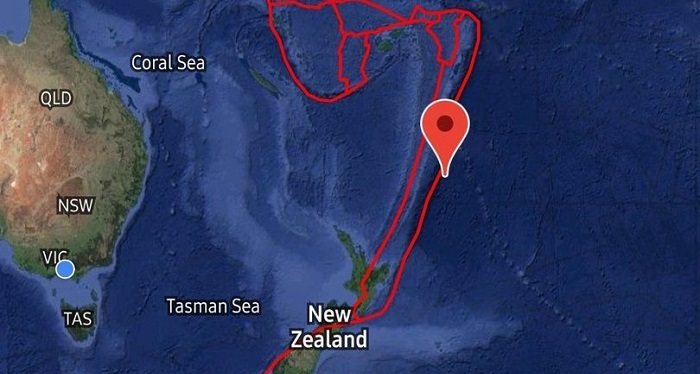6.1 magnitude quake rocks central Philippines

A 6.1 magnitude earthquake rocked the central Philippines on Thursday, the US Geological Survey said, though there were no reports of casualties or significant damage.
The strong and shallow quake struck just off the coast of Masbate province in the centre of the archipelago nation shortly after 2 am (1800 GMT).
The epicentre was 11 kilometres (seven miles) from the coastal village of Miaga in Masbate’s Uson municipality, USGS said.
The Philippine seismological agency said it had recorded more than 80 aftershocks.
“It was a bit strong,” Masbate provincial police chief Rolly Albana told AFP.
“I was sleeping when we were shaken and woken up.”
The province has a population of nearly one million people spread across three islands.
Masbate provincial disaster officer Adonis Dilao told local media some buildings in the capital Masbate City had cracks in their walls, including the provincial hospital.
Patients had been evacuated from the facility, he said.
A section of the ceiling inside a sports and entertainment venue in the city also collapsed.
“Electricity posts were moving, even parked cars were shaken,” said Dilao.
Masbate City Mayor Socrates Tuason said classes and government work would be suspended on Thursday to allow for the “monitoring and inspection of structural integrity” of buildings.
Uson police chief Captain Reden Tolledo said some residents fled their homes.
“Even I went outside because of possible aftershocks,” Tolledo said.
Gregorio Adigue, a disaster officer in the Dimasalang municipality, said he felt a strong aftershock nearly an hour after the quake.
But buildings and other structures in the area did not appear to be damaged, he said.
On Ticao island, which is part of Masbate province, residents in one house reported a wall had crumbled, but they were unharmed, said Consencino Reymundo, a disaster officer in San Fernando municipality.
“We lost electricity but it was restored two hours later,” Reymundo told AFP.
Quakes are frequent in the Philippines, which sits along the Pacific “Ring of Fire”, an arc of intense seismic as well as volcanic activity that stretches from Japan through Southeast Asia and across the Pacific basin.
Most are too weak to be felt by humans, but strong and destructive ones come too, with no technology available to predict when and where they will hit.
The nation’s civil defence office regularly holds drills simulating earthquake scenarios along active fault lines.
The last major quake was in October in the northern Philippines.
The 6.4 magnitude earthquake hit the mountain town of Dolores in Abra province, injuring several people, damaging buildings and cutting power to most of the region.
A 7.0 magnitude quake in mountainous Abra last July triggered landslides and ground fissures, killing 11 people and injuring several hundred.
Source: BSS/AFP










